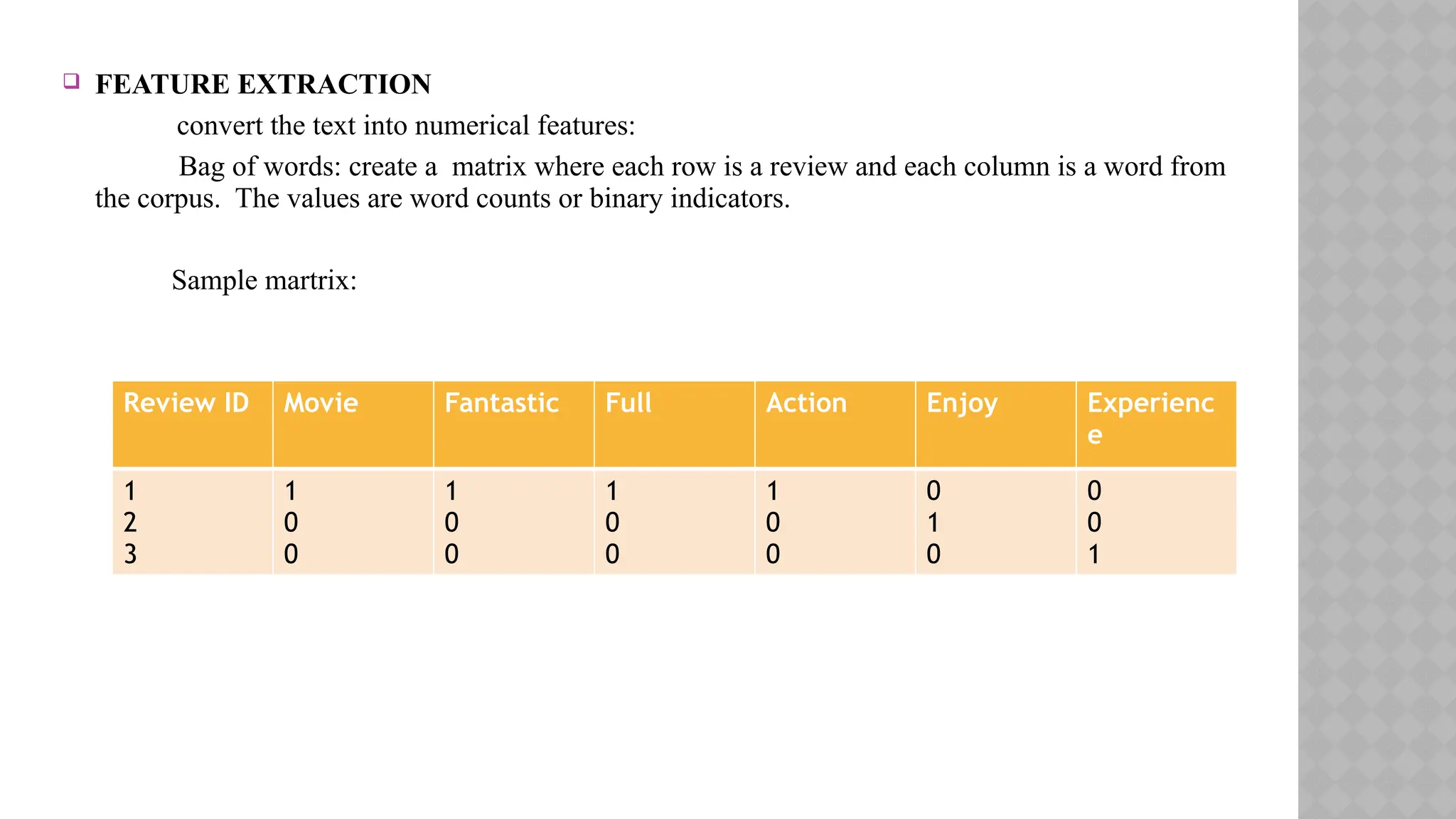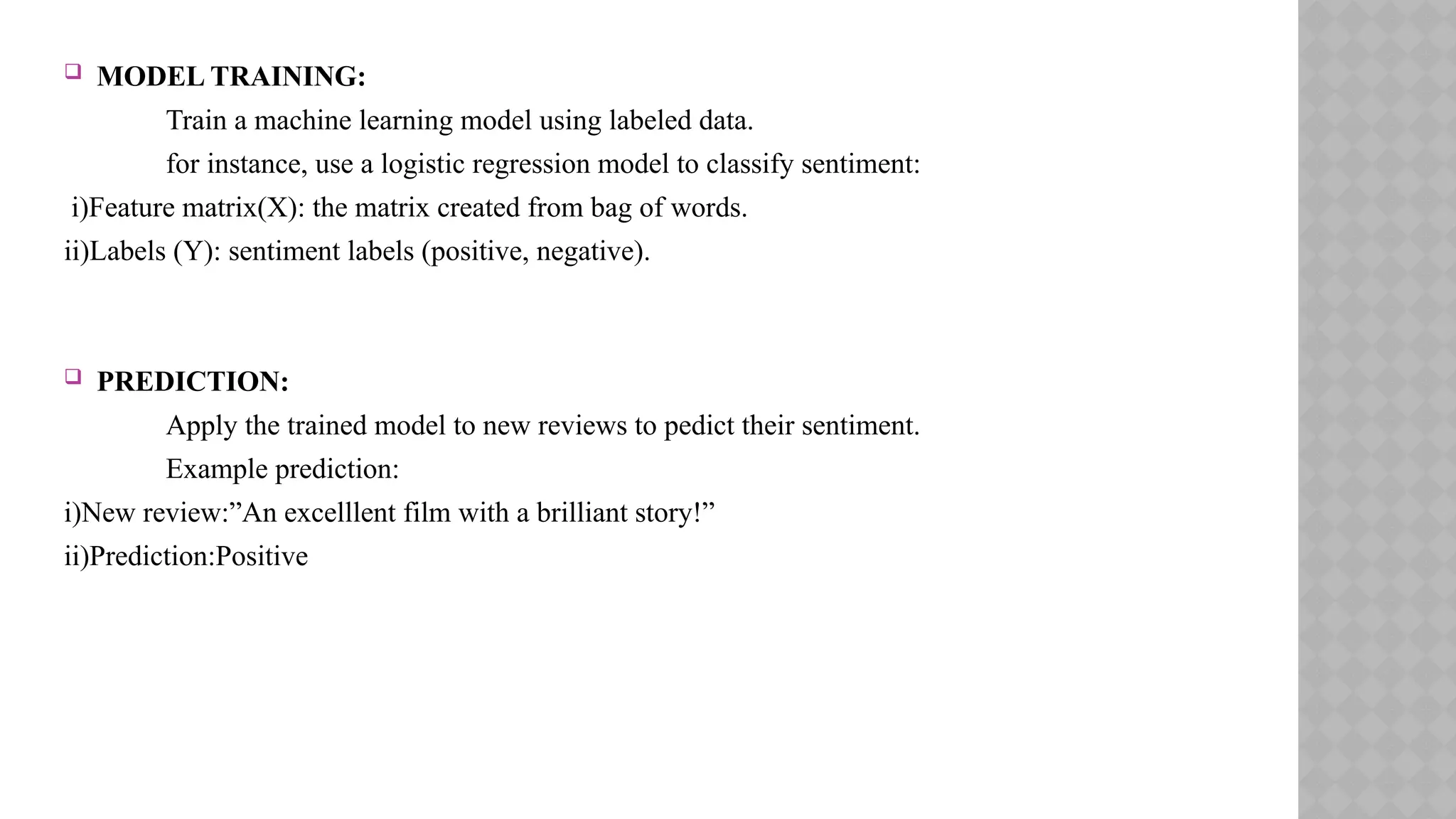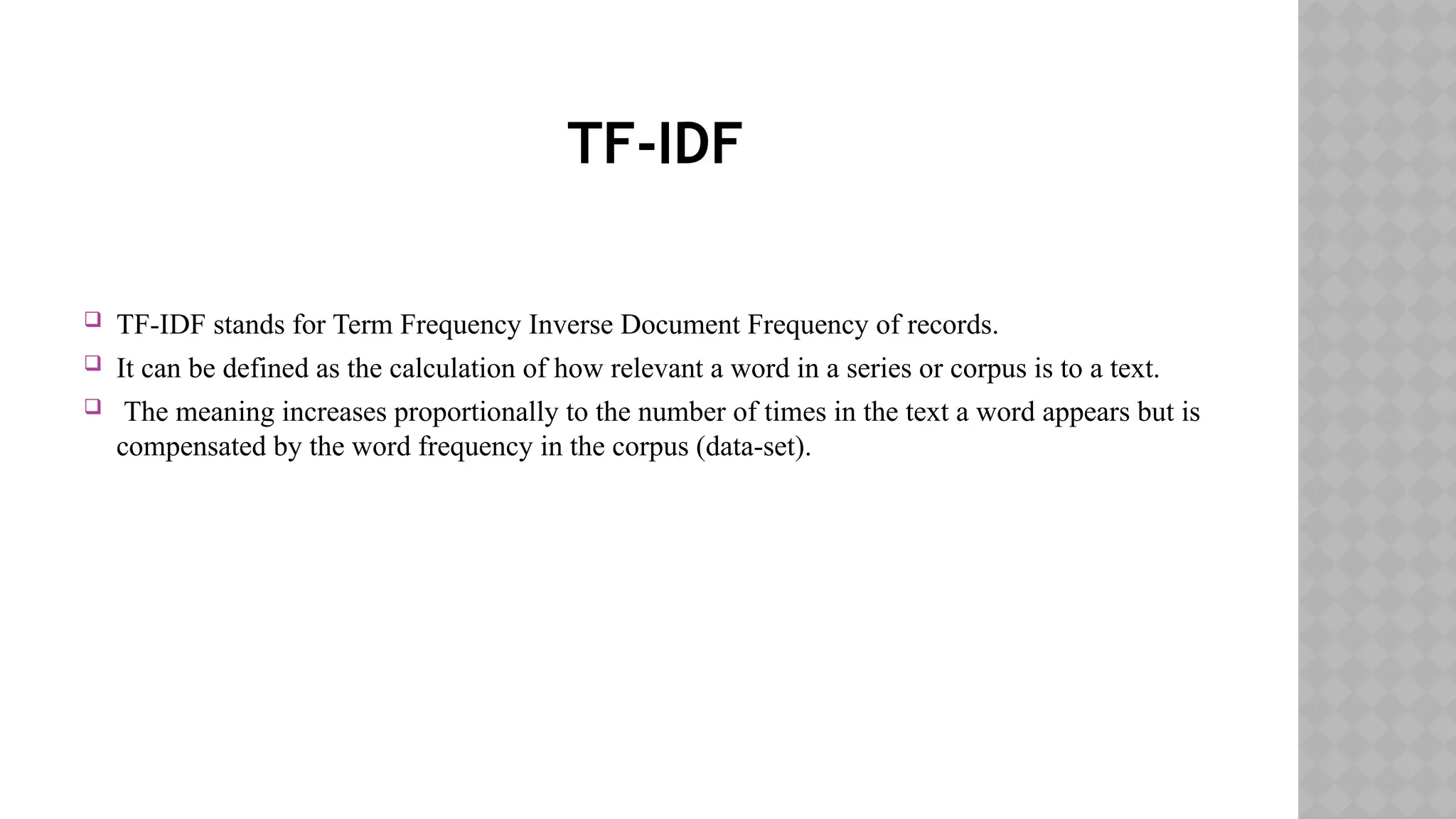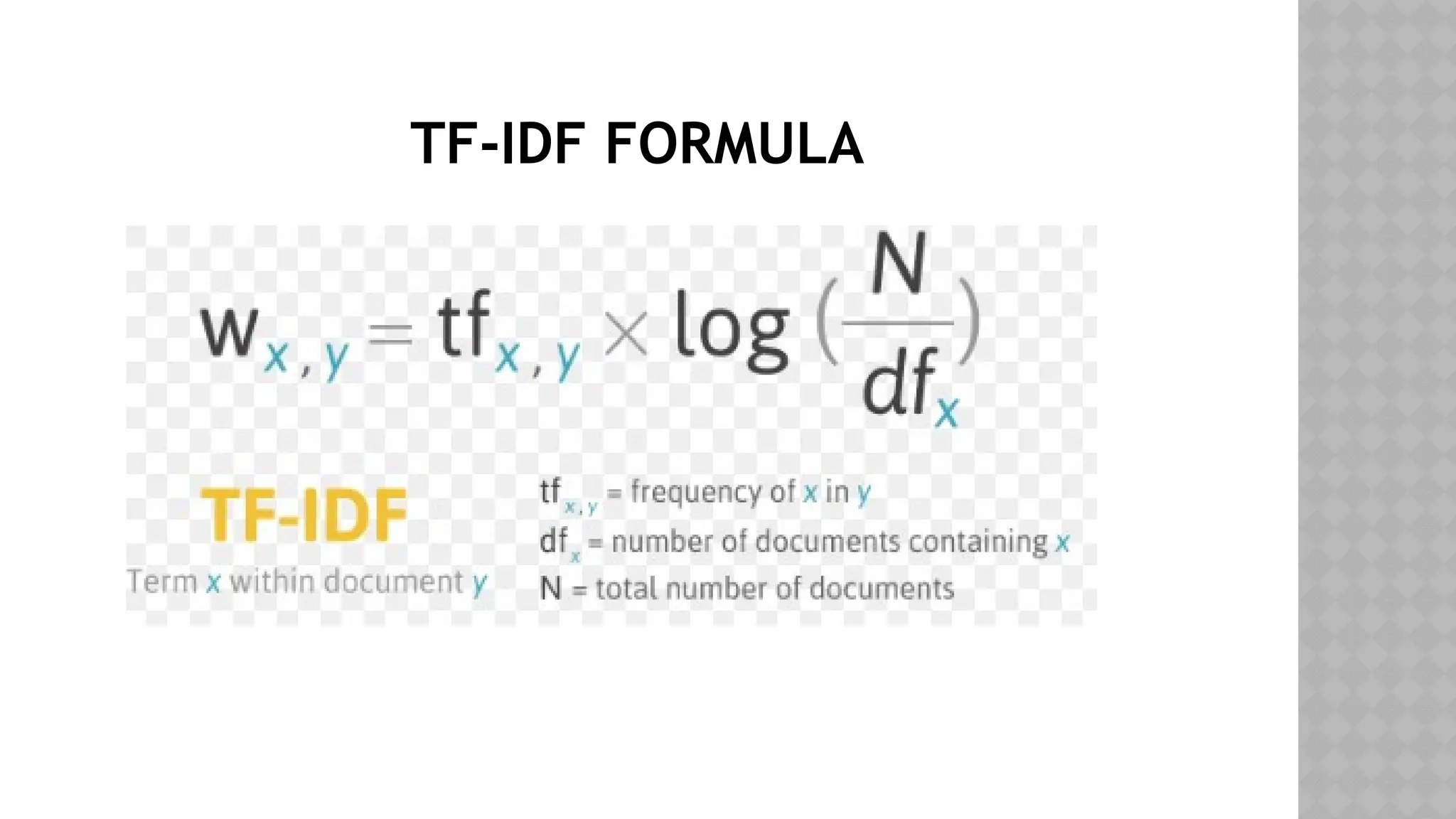The document discusses text analysis, detailing its process and various steps including language identification, tokenization, and sentence chaining. It highlights the importance of extracting business insights from unstructured text using software that can classify and analyze data from sources like emails and social media. An example is provided on sentiment analysis of movie reviews, outlining the steps from data collection to model training and prediction.
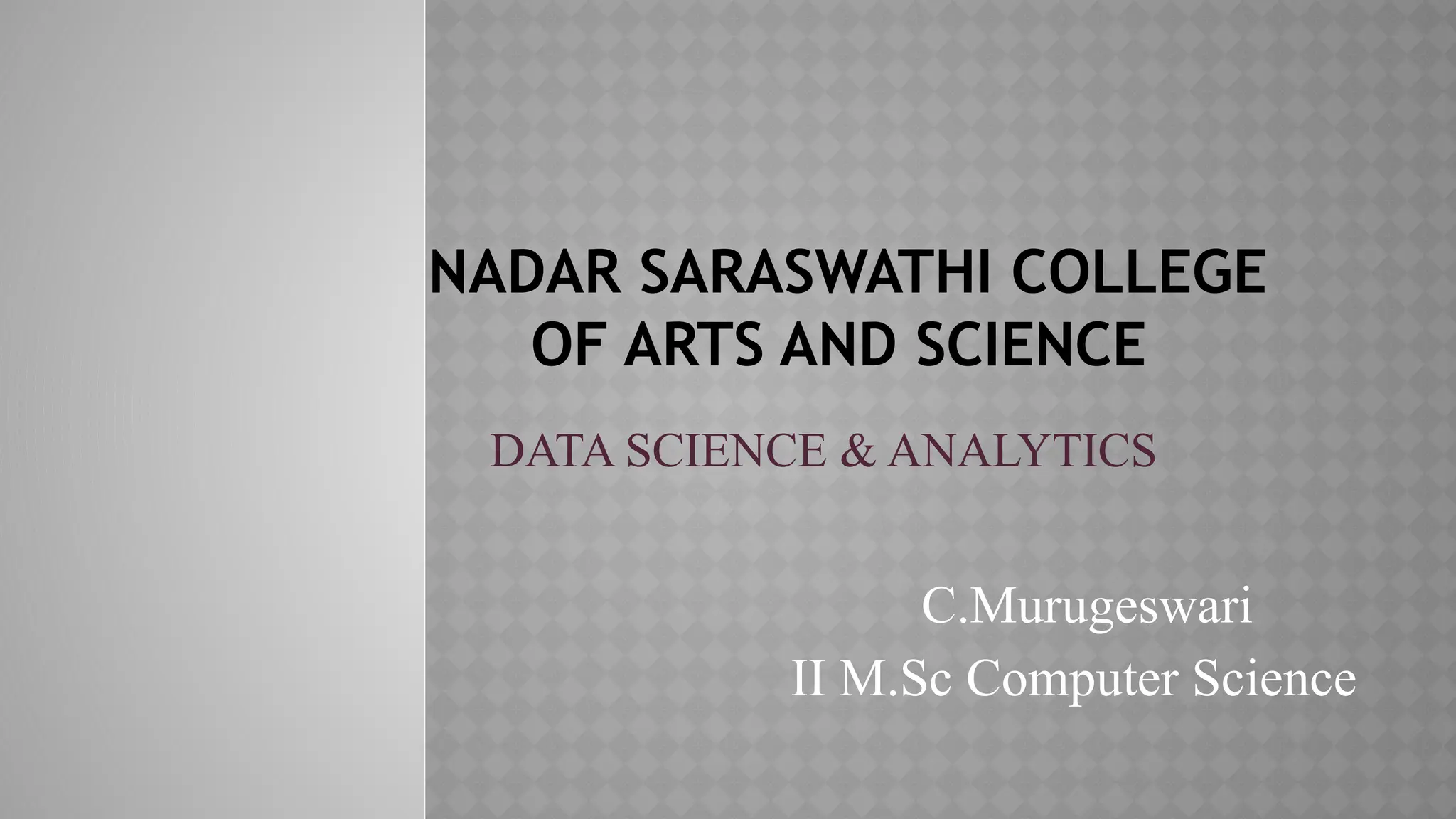
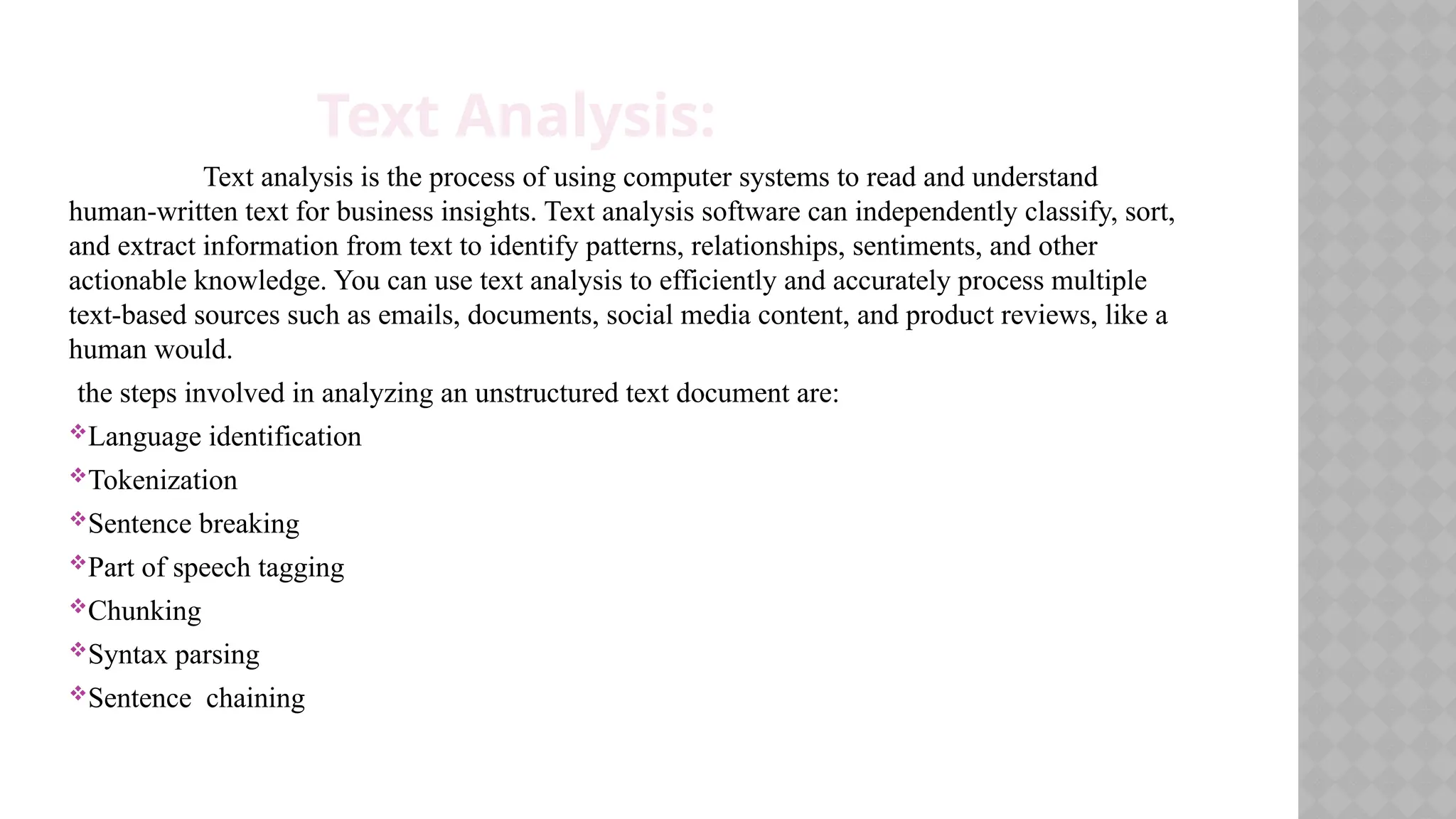
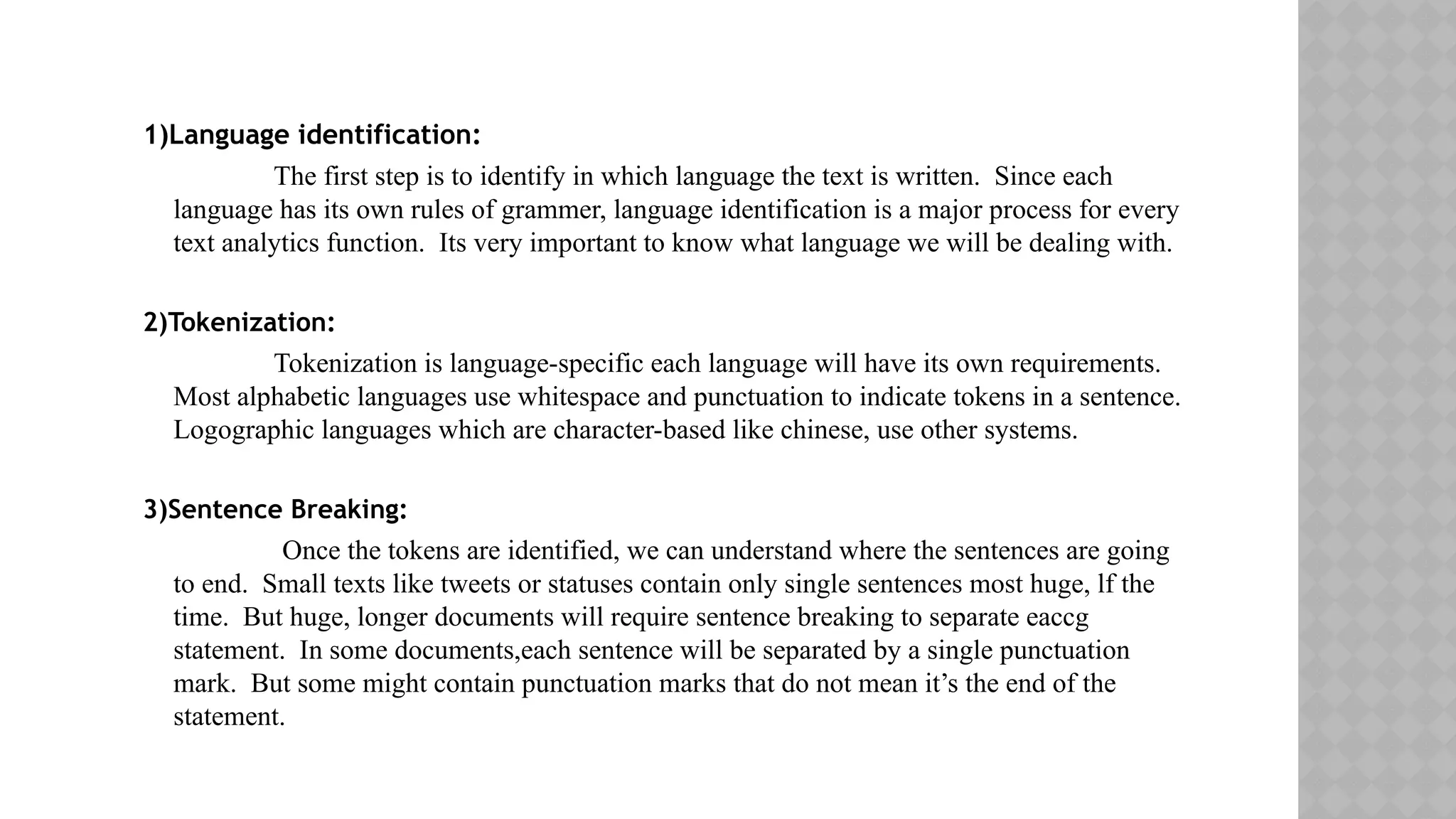
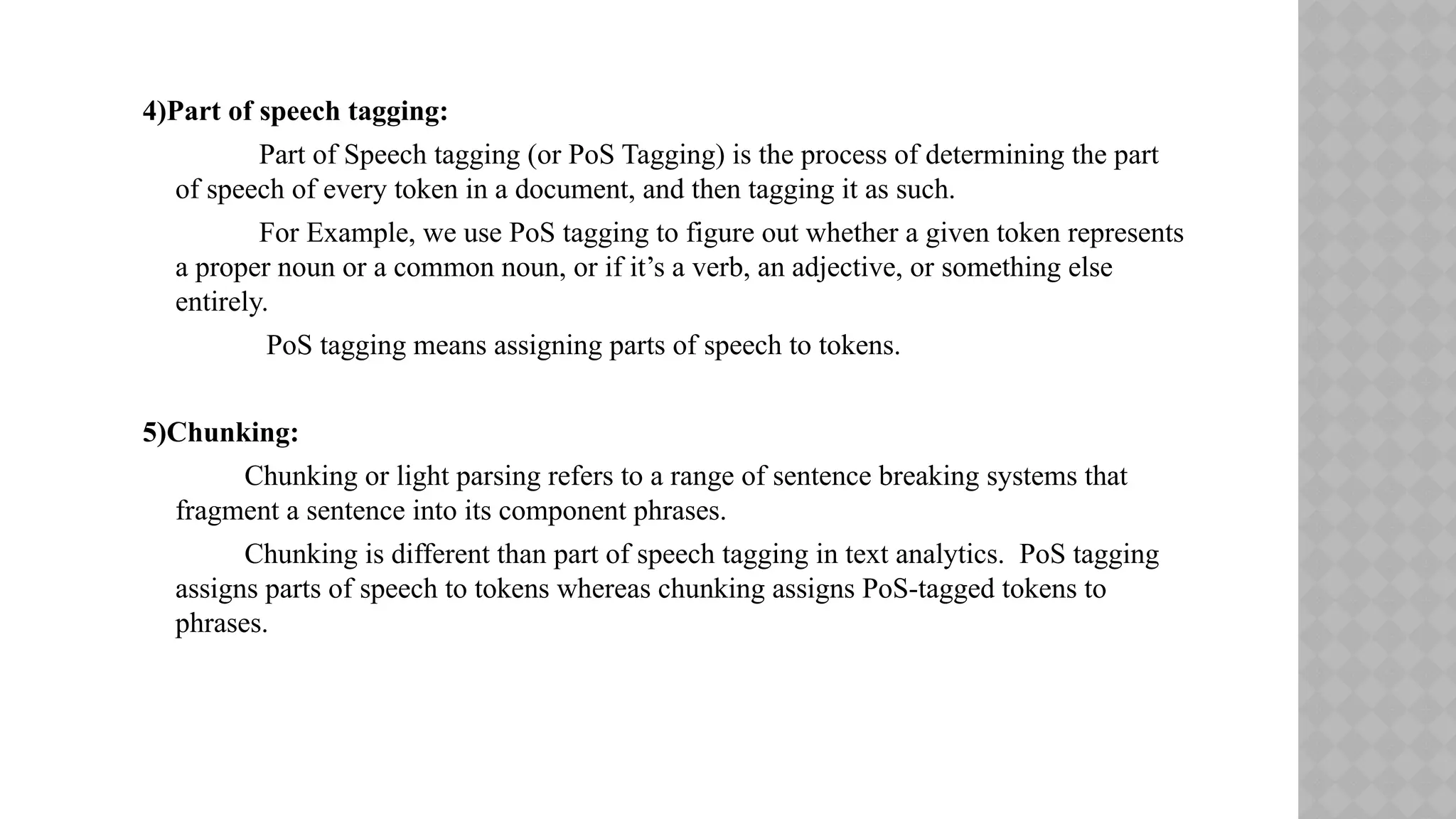
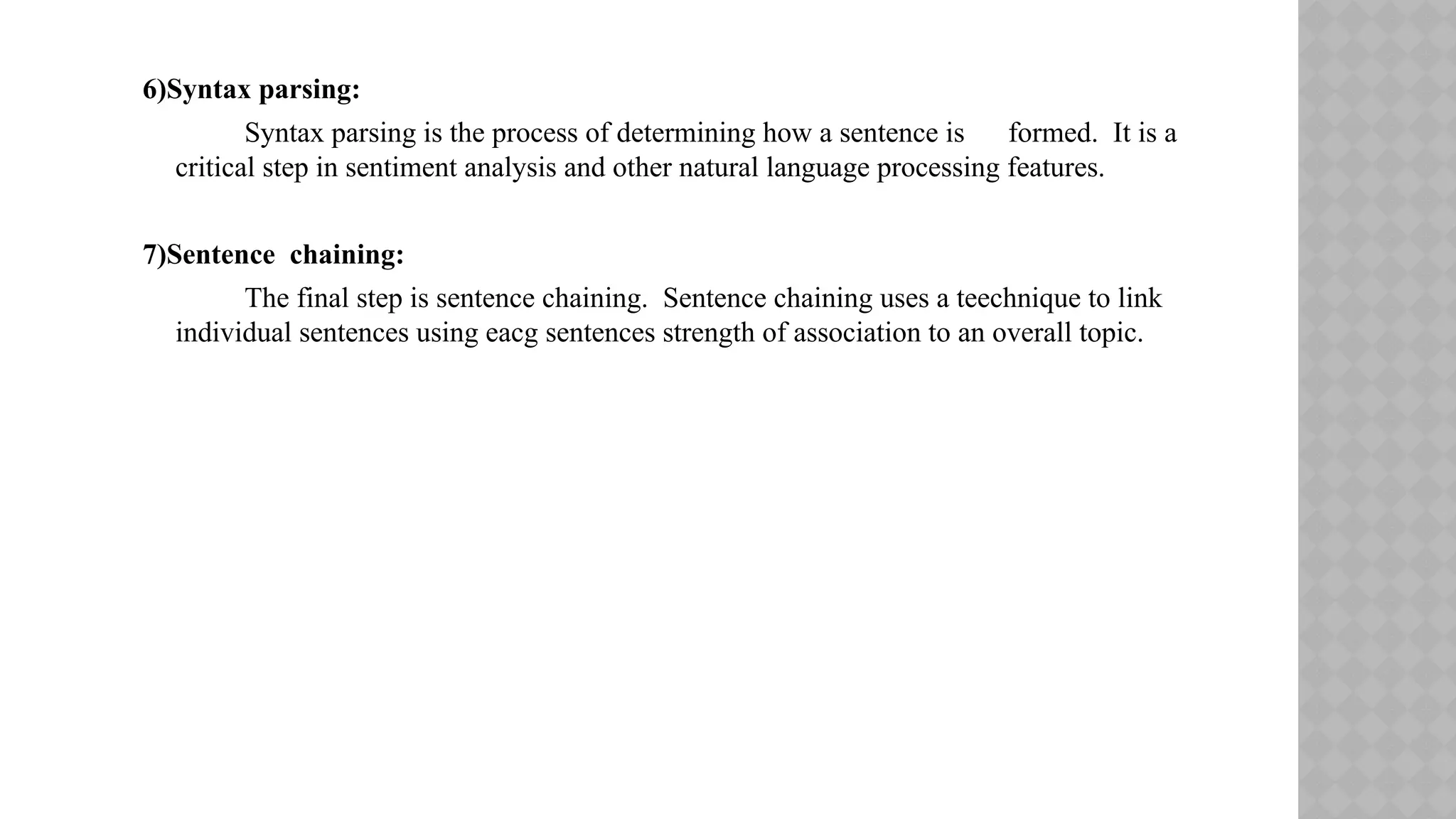
![EXAMPLE OF TEXT ANALYSIS:
SENTIMENT ANALYSIS OF MOVIE REVIEWS
DATA COLLECTION:
You have a dataset of movie reviews, each labeled with a sentiment(e.g., positive or
negative).
Ex:
i)The movie was fantastic and full of action-positive
ii)I didn’t enjoy the film; it was too slow-negative
PREPROCESSING:
Clean and prepare the text data:
lowercasing: convert all text to lowercase.
tokkenization: break text into individual words.
Ex:
i)Original: “the movie was fantastic and full of action.
ii)preprocessed:[“movie”,”fantastic”,”full”,”action”]](https://image.slidesharecdn.com/datascienceanalytics-240822004921-552d70a5/75/Data-Science-Analytics-Computer-Science-6-2048.jpg)
